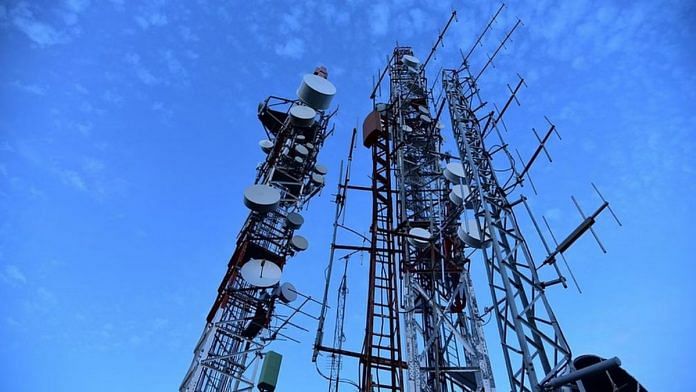The deadline for public comments on the 2022 draft Indian Telecommunication Bill ends tomorrow. Much has been written and said about the adverse implications of this bill on India’s digital ecosystem. It is a reminder that we didn’t leave the licence raj behind in the 1990s. Going ahead with this bill would mean choking off the one success story that has emerged from India.
The world of telecommunications has changed. There was a time when making calls meant using landlines. Then came mobile phones. Now, we use Voice over Internet Protocol (VoIP) applications such as WhatsApp. We buy educational services and groceries through apps. We consume entertainment through OTT services such as Netflix and Amazon Prime Video. Internet-based applications made it possible to survive the Covid-19 pandemic.
Carriage and content
In this world of the Internet of Things (IoT), it is useful to distinguish between carriage and content.
Carriage is the highway that allows us to go from one place to another. This is the telecommunications network that carries bytes from one machine to another. Content is what rides on this carriage. It is akin to a bicycle or truck that rides on the highway. It is the message that you send to your friend on WhatsApp. Netflix, for instance, creates and curates content, and it uses the carriage, i.e. the internet, to bring it to your home. You pay Netflix for the content and your internet service provider for the carriage.
Carriage works on wire and spectrum. There is a market failure as spectrum is like commons, and the government regulates its allocation. Once allocated, property rights on spectrum have to be enforced so that one firm is not unduly using more than its allocated share. There is no market failure in content.
A developer sees an opportunity, builds an app, and a customer is free to not use it. A developer may make money, but taxation is the purview of the department of revenue. There is no case for mandating that content seek permission from the carriage. There is a reason why cars and bicycles do not need a licence from the NHAI (National Highways Authority of India) to use the highway. Just as there is a reason why content providers do not need a license from the Department of Telecommunications.
Also read: Modi govt’s new IT rules don’t empower consumers, but expand State power over online content
A reminder of the licence raj
The bill in question grants the government the exclusive privilege of providing telecom services. Any service made available through the internet is under the Centre’s purview. If you have developed an app, and users access your app through the internet, the app will need a licence to operate. This is like saying that it is the exclusive privilege of the government to run a car. Any car that rides on a highway will first have to get a licence from the NHAI that builds the road. Also, the possession of any wireless equipment will need authorisation from the government. So, if your toaster has a wireless component of some sort, you will need government authorisation to bring it home.
A licensing regime is all too familiar to those of us born before the 1990s. If you wanted to start a factory, you first needed a licence from the government. How much you could produce, what equipment you could use, and at what price you could sell were decisions the government made. Such control over decision-making by the government dampens private initiative and leads to rent-seeking. It is no surprise that the Indian growth story did not take off in those years.
We have walked some distance from central planning since the 1991 reforms. But the draft bill is a demonstration that old instincts die hard. In 1951, the Industries (Development and Regulation) Act paved the way for the central government “to take under its control” the industries specified in the First Schedule. In 2022, the telecommunications bill will give the government exclusive privilege to provide telecom services. This will bring every service on the internet under a licensing regime.
Also read: Why are Bihar, Punjab, Rajasthan fiscally stressed? Every state has its own root cause
Lessons from China
Many businesses outside India may prefer to not go through a licensing regime. The result will be a ‘firewall of India’ that prohibits residents from access to such services. In this, we will be competing with friends who set up ‘the great firewall of China’. While many in India suffer from China envy, it is pertinent to point out that the China model hasn’t worked so well.
Today, there is a crackdown on its technology companies. The sector is weaker and has impacted both financial and job markets. Our own experience with national champions should remind us of the low innovation and degradation in quality of service that soon follows. The firewall of India will be detrimental to the industry. It will also deny Indian residents the benefit of services from across the world.
Software and software services are one of the most important industries in India. Digital India is a core pillar of this government’s policy strategy. The industry relies on being able to operate in an environment that prizes innovation and is not choked by regulatory compliance. The government has said that there will be “light touch regulation.” But in a non-rule-of-law environment, the government will have a chokepoint over the business. Even light touch regulation creates regulatory uncertainty and business risk. Private players will not be keen to build a business in India. The bill needs to be redrafted in its entirety.
The author is an associate professor at the National Institute of Public Finance and Policy (NIPFP). She tweets @resanering. Views are personal.
(Edited by Zoya Bhatti)






